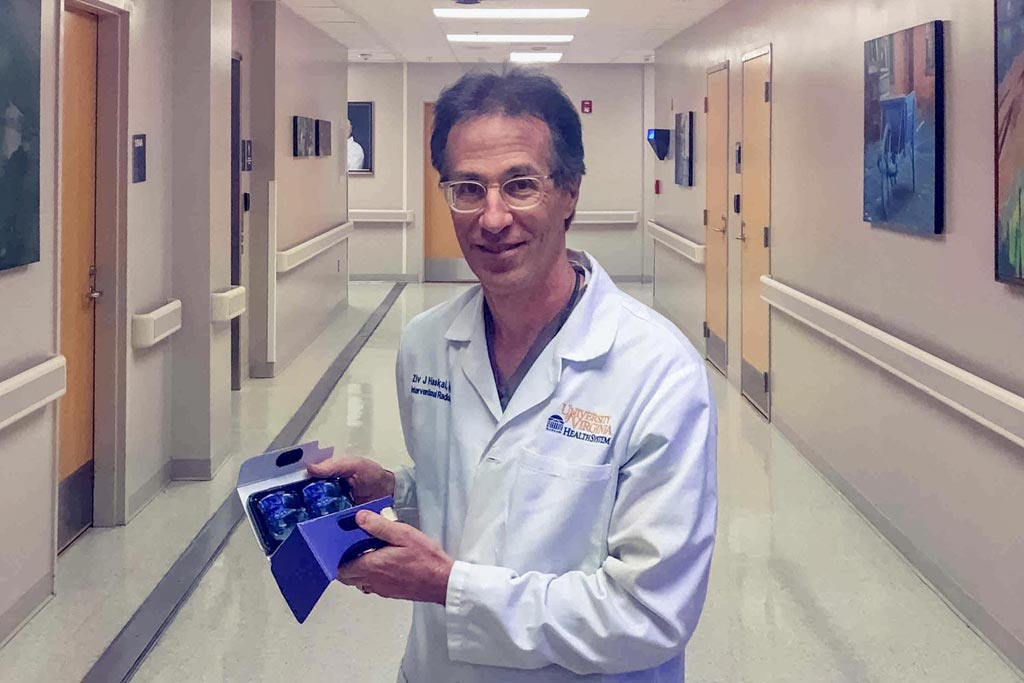Virtual Reality Helps Teach Interventional Radiology
By MedImaging International staff writers
Posted on 16 May 2018
A one-hour multi-segment movie shows how an immersive virtual reality (VR) experience can help educate patients, trainees, and attending physicians about interventional radiology.Posted on 16 May 2018
The VR360 movie, developed by Professor Ziv Haskal, MD, of the University of Virginia Health System (UVHS; Charlottesville, USA), walks viewers through an interventional radiology procedure called transjugular intrahepatic portosystemic shunt (TIPS), guiding them step-by-step through the entire process, with strategic use of picture-in-picture (PIP) to allow viewers to observe both what the radiologist is doing and what he is seeing. The movie was presented at the Society of Interventional Radiology (SIR) annual scientific meeting, held during March 2018 in Los Angeles (CA, USA).

Image: Professor Ziv Haskal and a pair of VR goggles (Photo courtesy of UVHS).
From inside VR goggles, or even simple inexpensive cardboard viewers that hook onto a smartphone, observers can look around in 360 degrees at the procedure, with optional multi-camera points of view and floating high-definition inserts providing them with every perspective of the case needed in order to maximizing learning. VR can also be used to show patients what to expect during a procedure, to teach a nursing student what must be kept sterile in an operating room, or to provide a refresher for physicians who have not performed the procedure recently.
“VR is a force multiplier, providing expert training to physicians around the world, those wishing to refresh their skills or gain confidence for delivering care in environments where clinician experts cannot provide them in-room training,” said Professor Haskal when presenting the movie. “The immersive nature of VR, particularly when viewed in a VR viewer, heralds a sea change in complex medical training. The multi-camera shoot and floating high-definition inserts offers viewers every perspective of the case, maximizing learning.”
“Interventional radiology has always been on the forefront of modern medicine and VR360 is the cutting-edge of medical simulation, so this project embodies the innovative spirit of our specialty,” concluded Professor Haskal, who is also the editor-in-chief of the Journal of Vascular and Interventional Radiology (JVIR). “We took one of the hardest procedures we perform and created an all-enveloping, in-the-room VR film allowing an operating physician to return to any complex segment they wish for learning, review and perspective.”
Related Links:
University of Virginia Health System














